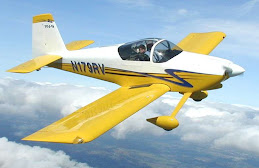Attached 2nd aluminium angle to edge of bench. Positioned HS and elevator assembly with counterbalance arms in line. drilled trailing edges to angle and clecoed. Cleared bench for rudder and rearranged shop. Cleaned AEX wedge of elevators. Cleaned skins inside trailing edge. Mixed tank sealant. Sealed in trailing edge in left and right elevators, sealed foam ribs into trim tab.


 With the entire HS/elevator assembly in place on the worktables, I attached the remaining part of the aluminum angle I had bought (the first part was used on the rudder) under the trailing edge of the left elevator (now located on the right, as the assembly is upside down to allow the elevator control horns to stick up rather than down) One of the counterbalance arms had initially been about 1cm out of alignment but by the time everything was weighed down and the trailing edge clamped to the angles, it was all perfectly aligned again. I match-drilled through the trailing edge into the aluminium angle, putting a cleco in every hole. I worked from the centre outwards as I feel this is more likely to avoid any waves or curves in the trailing edges.
With the entire HS/elevator assembly in place on the worktables, I attached the remaining part of the aluminum angle I had bought (the first part was used on the rudder) under the trailing edge of the left elevator (now located on the right, as the assembly is upside down to allow the elevator control horns to stick up rather than down) One of the counterbalance arms had initially been about 1cm out of alignment but by the time everything was weighed down and the trailing edge clamped to the angles, it was all perfectly aligned again. I match-drilled through the trailing edge into the aluminium angle, putting a cleco in every hole. I worked from the centre outwards as I feel this is more likely to avoid any waves or curves in the trailing edges.My drill press, bench grinder and band saw had to be cleared off the third worktable to create space for the rudder. These machines are attached to a second work surface which is cut into three sections, one for each machine. These usually just lie side by side on the worktable relying on the weight of the machines to keep them steady. I can clamp them to the work surface if I need to. Other than lifting the heavy drill press and band saw carefully for the sake of my back, it was easy to get them down off the worktable. I was pretty happy with the arrangement and pleased that I had gone to the trouble of installing them this way. BTW, the space under the table is taken up with my compressor. It is lined with two layers of scrap carpet and the front panel is removable. The compressor is an oiled belt-driven model and is fairly quiet anyway, but with this extra insulation, it makes only a little more noise than our kitchen fridge.
Before starting this morning, I went out to buy a length of wooden dowel. I used this to spread the skins slightly at the trailing edge (this is why the last three rivets at the narrow ends of the root and tip ribs are left open until now). I cleaned everything as well as I possibly could with methylated spirit, including the site of the foam ribs on the inside of the trim tab skin. Once the wedge with the sealant spread on them is in place, the dowel rod is drawn out sideways allowing the skins to close on the wedge.
Mixing the tank sealant in the cartridge took some figuring out but I got it done. I recorded the process on video with a view to posting it on Youtube after I edit it down to about 3-5 minutes. It takes quite a lot of strength to move the plunger up and down through the material in the cartridge. I wonder whether it was A) too cold (I stored it in a fridge) or B) too old. Also, once mixed, it was nowhere near as smooth as I had hoped and really quite difficult to spread on the AEX wedge surfaces. The trouble with this stuff is that once you start there is no turning back so I pressed on. I spread it as thinly as I could on the foam ribs and wedges, put them in place and clecoed and clamped them shut. By the time I got to the last trailing edge (the left elevator) the material was already clearly going off so I got the job finished just in time. I reckon it was useable for not much more than an hour after mixing. How you are supposed to carefully apply 3.5 oz of really thick muck within an hour, I really don't know. I suppose you could say that I am no longer a Proseal 'virgin' and the experience has left me feeling dirty (in fact, I am actually dirty). I will not be using the cartridge format again.
Anyway, that's it for a week until I am certain that the tank sealant has fully cured.


No comments:
Post a Comment